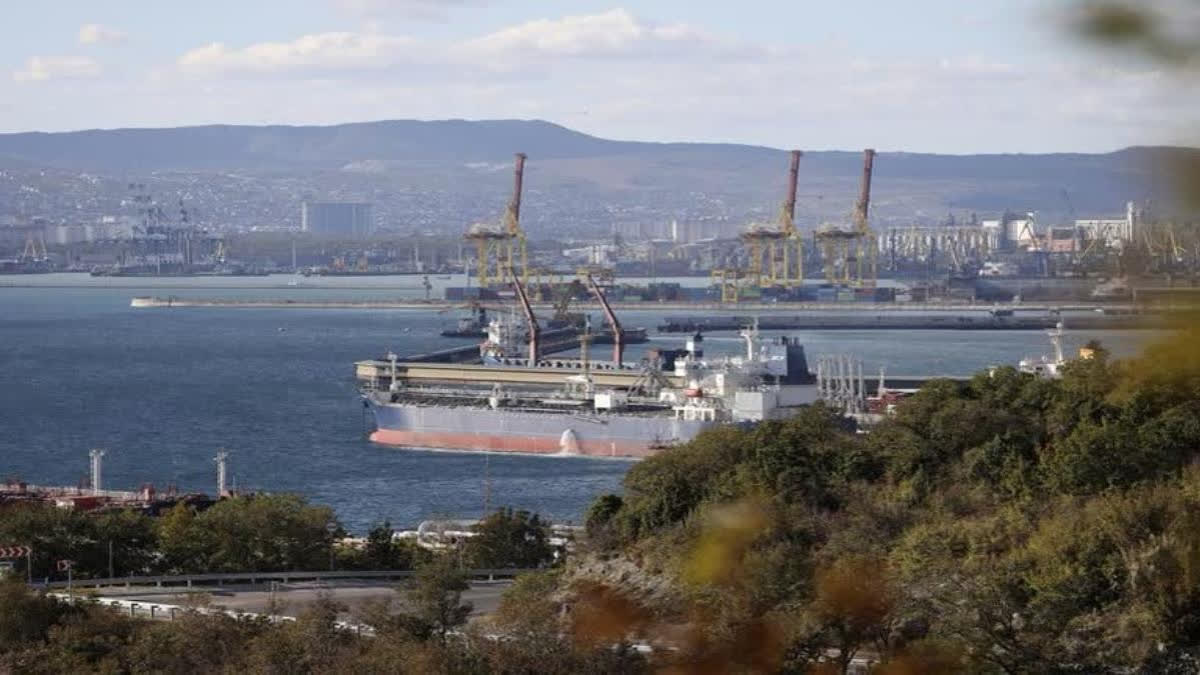New Delhi: India's export of fuels like diesel to the European Union jumped 58 per cent in the first three quarters of 2024, with a bulk of them likely coming from refining discounted Russian oil, according to a monthly tracker report. The EU/G7 countries in December 2022 introduced a price cap and an embargo on the imports of Russian crude oil in a bid to cripple Kremlin's revenue and create a vacuum in its funding for the invasion of Ukraine.
However, a lack of a policy on refined oil produced from Russian crude meant that countries not imposing sanctions could import large volumes of Russian crude, refine them into oil products and legally export them to the price-cap coalition countries. India has become the second biggest buyer of Russian crude oil since the invasion, with purchases rising from less than one per cent of the total oil imported in the pre-Ukraine war period to almost 40 per cent of the country's total oil purchases.
The rise was primarily because Russian crude oil was available at a discount to other internationally traded oil due to the price cap and the European nations shunning purchases from Moscow. Fuel exports were, however, at full price.
"Capitalising on the refining loophole, India has now become the biggest exporter of oil products to the EU. In the first three quarters of 2024, exports to the EU from the Jamnagar, Vadinar (in Gujarat) and new Mangalore refinery - which are increasingly reliant on Russian crude - saw a 58 per cent year-on-year rise further," the Centre for Research on Energy and Clean Air (CREA) said its latest report.
Reliance Industries Ltd has oil refineries at Jamnagar while Russia's Rosneft-backed Nayara Energy has a unit at Vadinar. Mangalore Refinery and Petrochemicals Ltd (MRPL) is a subsidiary of the state-owned Oil and Natural Gas Corporation (ONGC). This, it said, amplified "the fact that EU Member States continued imports are expanding the refining loophole and Russian revenues from crude exports to third countries".
Europe typically imported an average of 1,54,000 barrels per day (bpd) of diesel and jet fuel from India before Russia's invasion of Ukraine. This has almost doubled. While CREA did not give an absolute number for imports, the European think tank had in a previous report stated that Euro 8.5 billion of price cap coalition countries' imports of oil products in 13 months to December 2023 were made from Russian crude.
These imports in 13 months were equivalent to 68 per cent of the EU's annual commitment to aid Ukraine between 2024 and 2027. "In the 13 months since the oil price cap took effect (in December 2022), over one-third of India's exports of oil products to sanctioning countries was derived from Russian crude (EUR 6.16 billion or USD 6.65 billion)," the Finland-based CREA had said in the previous report.
While there are no restrictions or sanctions on buying/using Russian crude oil and exporting fuels like diesel derived from it, the Group of Seven (G7) rich nations, the European Union and Australia - called the price cap coalition countries - first set a crude price cap of USD 60 per barrel starting December 5, 2022, and later on products like diesel to keep the market supplied while limiting Moscow's revenue.
CREA in the latest report said India, the world's third largest oil-consuming and importing nation, in October bought Euro 2 billion worth of crude oil from Russia, down from Euro 2.4 billion in the previous month. "China has bought 47 per cent of Russia's crude exports (in October), followed by India (37 per cent), the EU (6 per cent), and Turkey (6 per cent)," it said.
"India was the second-largest buyer of Russian fossil fuels in October, contributing 19 per cent (EUR 2.6 billion) to Russia's monthly export earnings from its top five importers. An estimated 77 per cent of India's imports (valued at EUR 2 billion) comprised crude oil." In September, India contributed 21 per cent (EUR 2.8 billion) to Russia's monthly export earnings from its top five importers. Almost 85 per cent of India's imports (valued at EUR 2.4 billion) comprised crude oil.
"From December 5, 2022, until the end of October 2024, China purchased 46 per cent of all Russia's coal exports, followed by India (17 per cent), Turkey (10 per cent), South Korea (10 per cent), and Taiwan (5 per cent) to round off the top five buyers list," the agency said. India is more than 85 per cent dependent on imports to meet its crude oil needs.
In October, the discount on Russian Urals grade crude oil increased 77 per cent to an average of USD 5.14 per barrel compared to Brent crude oil. The discounts on the ESPO grade narrowed by 5 per cent and traded at an average discount of USD 4.58 per barrel, while that on the Sokol blend widened by 8 per cent to USD 6.77 a barrel.
According to CREA, 34 per cent of Russian seaborne crude oil and its products in October were transported by tankers subject to the oil price cap. The remainder was shipped by 'shadow' tankers and was not subject to the oil price cap policy. Cargoes of Russian crude can access western services like insurance and shipping only if sales are capped below USD 60 a barrel.
To circumvent this, a dark or shadow fleet of oil tankers emerged. The shadow fleet consists of second-hand decrepit oil tankers with opaque ownership structures that make it difficult to ascertain who controls them or forces them to follow Western laws.
CREA said, "83 per cent of the total value of Russian seaborne crude oil was transported by 'shadow' tankers, while tankers owned or insured in countries implementing the price cap accounted for 17 per cent of the total value of Russian crude exported in October". There have been calls given for preventing growth in 'shadow' tankers that are immune to the oil price cap policy.



